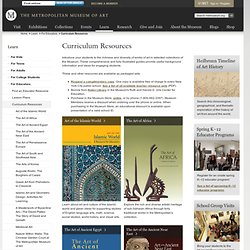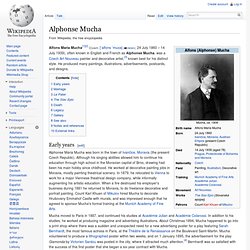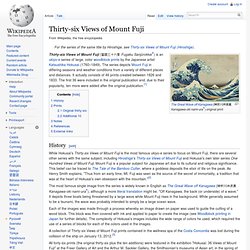

'Caligula's Palace and Bridge', Joseph Mallord William Turner. Curriculum Resources. Learn about art and culture of the Islamic world and glean ideas for supporting studies of English language arts, math, science, social studies, world history, and visual arts.

Explore the rich and diverse artistic heritage of sub-Saharan Africa through forty traditional works in the Metropolitan's collection. Use this comprehensive resource as an invaluable introduction to ancient Egyptian history and art focusing on works in the Museum's collection. Introduce your students to works of art made in the lands where many features of civilization originated. Examine and discuss works in the Museum's collection that embody the Renaissance interest in classical learning, fame, and beautiful objects. Through an exploration of diverse works of art in the Museum's collection from the South Asian subcontinent and the Himalayan region as well as from the many lands of Southeast Asia, this resource provides an ideal introduction to the history and culture of this vast region. Salvador Dali 1904-1989 - L'Arrivée d'Iseult - Radierung -Signiert XLI / LXXV.
Salvador Dali Print Portfolios - Art Gallery at RoGallery.com. Image: L'Arrivee D'Iseult. Van Vliet - Buch- und Kunstauktionen Gmbh, Berlin, on Friday, December 14, 2007. Utagawa hiroshige. Sam Wolfe Connelly. Alphonse Mucha. Alfons Maria Mucha[1][2] (Czech: [ˈalfons ˈmuxa] ( ); 24 July 1860 – 14 July 1939), often known in English and French as Alphonse Mucha, was a Czech Art Nouveau painter and decorative artist,[3] known best for his distinct style.

He produced many paintings, illustrations, advertisements, postcards, and designs. Early years[edit] Alphonse Maria Mucha was born in the town of Ivančice, Moravia (the present Czech Republic). Although his singing abilities allowed him to continue his education through high school in the Moravian capital of Brno, drawing had been his main hobby since childhood. Mucha moved to Paris in 1887, and continued his studies at Académie Julian and Académie Colarossi. Poster design by Mucha for Cycles Perfecta (1902) Marriage[edit] Mucha married Maruška (Marie/Maria) Chytilová on 10 June 1906, in Prague. Le Pater[edit] The Slav Epic[edit] A study of a man sitting 1891 Death[edit] All sizes. Thirty-six Views of Mount Fuji. Thirty-six Views of Mount Fuji (富嶽三十六景, Fugaku Sanjūrokkei?)

Is an ukiyo-e series of large, color woodblock prints by the Japanese artist Katsushika Hokusai (1760–1849). The series depicts Mount Fuji in differing seasons and weather conditions from a variety of different places and distances. It actually consists of 46 prints created between 1826 and 1833. The first 36 were included in the original publication and, due to their popularity, ten more were added after the original publication.[1] History[edit] The most famous single image from the series is widely known in English as The Great Wave off Kanagawa (神奈川沖浪裏, Kanagawa-oki nami-ura?) Each of the images was made through a process whereby an image drawn on paper was used to guide the cutting of a wood block. A collection of Thirty-six Views of Mount Fuji prints contained in the wellness spa of the Costa Concordia was lost during the collision of the ship on January 13, 2012.[3] A-Z of the Pre-Raphaelites: Rebel painters of a completely different nature - Features - Art.
B is for Back-scratching.

The Brotherhood – Dante Gabriel Rossetti, John Millais and William Holman Hunt were core members – and their disciples (including John Ruskin, William Morris and Algernon Swinburne) enthusiastically puffed each other's work in the press. Rossetti reviewed his own work under the name of Frederic Stephens (see Stephens). They were known, for a time, as the Mutual Admiration School. Also for Burne-Jones, Edward, who, under Rossetti's spell, painted pseudo-medieval courtly themes and female figures of a mysterious, and generic, beauty. Also for Brown, Ford Madox, painter, grandfather of Ford Madox Ford. C is for Collinson, James, painter and original member. D is for Dante Alighieri, Italian poet and cartographer of hell after whom DG Rossetti was named, and whose life and works he plundered for subject matter. E is for Euphemia "Effie" Gray, neglected wife and Pre-Raphaelite muse.
G is for Germ, The. I is for Insults and Invective. J is for Jesus. N is for Nuns. The Blog of Kells.